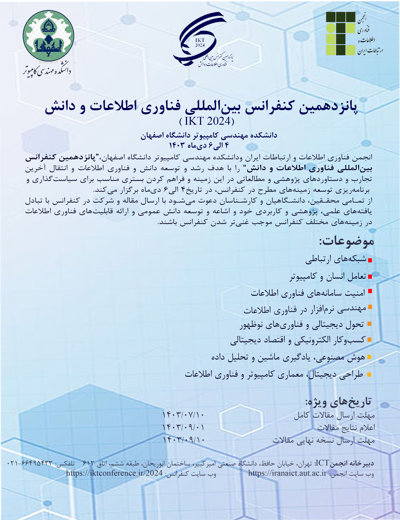0% Complete
Authors :
Keywords :
Abstract :
List of archived papers
Saeed Doostali - Seyed Morteza Babamir - Mohammad Shiralizadeh Dezfoli - Behzad Soleimani Neysiani
Maede Esmaeili - Faria Nassiri-Mofakham - Fatemeh Hassanvand
مسلم سمیعی پاقلعه - مهرنوش شمس فرد
Ayoub Parvizi - Dr Mohammad Kazemifard - Ziba Imani
سید عماد موسوی - مهرداد آشتیانی
Faraz Fatahnaie - Armin Azhdehnia - Seyyed Amir Asghari - Mohammadreza Binesh Marvasti
Anita Karim Ghassabpour - Hatam Abdoli - Muharram Mansoorizadeh - Saeid Seyedi
Aien Ghanbari Adivi - Behrouz Shahgholi Ghahfarokhi





